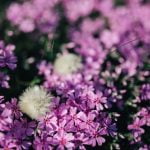Are you looking for ideas for front gardens without grass? As the trend towards more sustainable and low-maintenance landscaping continues to grow, many homeowners are seeking alternatives to traditional grass lawns for their front yards. In this article, we will explore the benefits of front gardens without grass and provide a variety of creative and beautiful ideas for designing a stunning and eco-friendly front garden.
Choosing to forgo grass in your front garden not only reduces water consumption and maintenance efforts but also contributes to a more environmentally friendly landscape. By exploring xeriscaping, hardscaping options, container gardening, native plant landscaping, and edible front gardens, you can create a unique and visually appealing outdoor space that enhances the curb appeal of your home while minimizing your environmental impact.
Whether you’re interested in creating a drought-tolerant garden, incorporating decorative gravel and pathways, or cultivating an edible landscape, this article will provide you with plenty of inspiration and practical tips for designing a front garden without grass. Join us as we delve into the world of sustainable landscaping and discover the possibilities for transforming your front yard into a vibrant and inviting space.
Benefits of Front Gardens Without Grass
Front gardens without grass offer a multitude of benefits, making them an increasingly popular choice for homeowners looking to create a unique and sustainable outdoor space. One of the primary advantages of front gardens without grass is their environmental friendliness. By opting for alternative landscaping options such as xeriscaping or native plant gardens, homeowners can significantly reduce water consumption, minimize the use of harmful pesticides and fertilizers, and provide essential habitat for native wildlife.
In addition to being environmentally friendly, front gardens without grass also require minimal maintenance compared to traditional lawns. This is particularly appealing to individuals with busy schedules or those who simply want to spend less time on yard work. With hardscaping options like pathways, rock gardens, and decorative gravel, as well as container gardening and native plant landscaping, homeowners can enjoy a beautiful front garden without the need for regular mowing, watering, and other high-maintenance tasks.
Furthermore, front gardens without grass can enhance the aesthetic appeal of a property. The creative use of different landscaping elements and plant varieties can result in visually striking and dynamic outdoor spaces that add character and charm to the home.
Whether it’s a colorful array of drought-tolerant plants in a xeriscape garden or an artistic arrangement of potted plants in a container garden, there are endless possibilities for creating an eye-catching front yard landscape without traditional grass lawns.
| Benefit | Description |
|---|---|
| Environmental friendliness | Reduces water consumption, minimizes use of pesticides and fertilizers. |
| Low maintenance | Requires less regular mowing, watering, and upkeep. |
| Aesthetic appeal | Allows for creative landscaping options resulting in visually striking outdoor spaces. |
Xeriscaping
One of the key benefits of xeriscaping is its ability to conserve water. Drought-tolerant plants are well-suited to survive in dry conditions, which means less irrigation is required to keep them healthy and vibrant. This not only reduces water usage but also helps homeowners save on their water bills. In addition, xeriscaping can contribute to the preservation of natural resources by minimizing the impact on local water supplies.
Incorporating xeriscaping into your front garden design also offers the opportunity to enhance the aesthetic appeal of your outdoor space. By carefully selecting a variety of drought-tolerant plants with different colors, textures, and heights, you can create visual interest and dimension within your landscape. Additionally, strategic placement of rocks, mulch, and other hardscaping elements can further enhance the overall look of your front garden.
With thoughtful planning and creativity, xeriscaping allows you to achieve a beautiful, sustainable garden that will be the envy of your neighborhood. If you’re looking for ideas for front gardens without grass, consider exploring xeriscaping as a practical and visually appealing option for creating a stunning outdoor space.
Hardscaping Options
When it comes to creating a front garden without grass, incorporating hardscaping elements can add texture and visual interest to your outdoor space. Here are some ideas for hardscaping options to consider:
- Pathways: Create a welcoming entrance to your home by adding a pathway made of materials such as pavers, flagstone, or gravel. Whether you opt for a straight, formal walkway or a meandering path through your garden, pathways can help define the layout of your front yard while adding a touch of charm.
- Rock Gardens: Embrace the beauty of natural stone by incorporating rock gardens into your front yard landscape. Arrange different sizes and shapes of rocks to create visually appealing features, and complement them with drought-tolerant plants for a low-maintenance yet stunning display.
- Decorative Gravel: Replace grass with decorative gravel to create a modern and versatile front garden. Gravel comes in various colors and textures and can be used to cover large areas or as accents around existing landscaping elements. It’s an excellent option for those looking for an alternative to traditional grass that requires little to no maintenance.
By incorporating these hardscaping options into your front garden design, you can create a unique and eye-catching landscape that is both beautiful and practical. Whether you opt for a combination of pathways, rock gardens, or decorative gravel, there are plenty of creative ways to transform your front yard without relying on traditional grass.
Try experimenting with different materials and layouts to find the perfect hardscaping elements that suit your aesthetic preferences and maintenance needs while contributing positively to the environment.
Container Gardening
- Choose the right containers: Consider the size, material, and style of the pots or planters you use. Ensure they complement the overall design of your front garden.
- Select a variety of plants: Mix different types of flowers, foliage, and even small shrubs or trees to create visual interest. Consider the sunlight and shade conditions in your front yard when choosing plants.
- Arrange strategically: Place taller plants towards the back and cascading or trailing plants towards the edges to create dimension and depth in your container garden.
- Maintenance is key: Regular watering, fertilizing, and pruning are essential for keeping your container garden thriving. Be sure to choose plants that are well-suited for your climate and weather conditions.
- Get creative with placement: Arrange your potted plants on steps, around the entrance, or along pathways to enhance the curb appeal of your home.
Overall, container gardening offers endless possibilities for creating a beautiful front garden without grass. Use these tips to get started on designing an eye-catching display of potted plants and flowers that will impress visitors and passersby alike.
Native Plant Landscaping
Using native plants in front gardens without grass is not only aesthetically pleasing but also beneficial for the environment. Native plants are well-adapted to the local climate and soil conditions, requiring minimal maintenance and water once established. By incorporating a variety of native plants into your front garden design, you can create a beautiful and sustainable landscape that supports local wildlife and conservation efforts.
Benefits of Using Native Plants
One of the key benefits of using native plants in front gardens without grass is their ability to thrive with minimal input. Unlike non-native species, native plants have evolved to survive in the local environment, making them more resistant to pests, diseases, and extreme weather conditions. Additionally, native plants provide vital food and habitat for local pollinators, birds, and other wildlife, contributing to biodiversity and ecological balance in your area.
Designing With Native Plants
When designing a front garden without grass using native plants, it’s important to consider factors such as sunlight exposure, soil type, and water availability. By selecting a diverse range of native species with varying heights, colors, and bloom times, you can create an eye-catching display that changes throughout the seasons. Incorporating both flowering plants and foliage-rich varieties will add texture and visual interest to your front garden while supporting pollinators and beneficial insects.
Maintaining a Native Plant Landscape
Once established, native plant landscapes generally require less maintenance than traditional grass lawns. However, it’s important to provide occasional watering during extended dry periods until the plants have developed deep root systems.
Regular weeding and mulching can help suppress invasive species while promoting the health of native plantings. By taking a hands-on approach to caring for your front garden without grass using native plants, you can enjoy a low-maintenance yet stunning landscape that benefits both your property and the surrounding ecosystem.
Edible Front Gardens
One of the most innovative and practical ideas for front gardens without grass is the incorporation of edible elements. Edible front gardens not only add beauty and interest to your landscape, but they also provide a sustainable source of fresh produce right at your doorstep. Whether you have limited space or a sprawling front yard, there are numerous creative ways to integrate fruits, vegetables, and herbs into your outdoor space.
Vertical Gardens
For smaller front yards or for those looking to maximize their space, vertical gardens are an excellent option. Install trellises, wall-mounted planters, or hanging baskets to grow fruits and vegetables such as strawberries, tomatoes, peppers, and herbs. Not only do vertical gardens add visual appeal to your front yard, but they also make it easy to harvest your homegrown produce.
Perennial Fruit Trees
Consider planting dwarf fruit trees like apple, pear, or cherry that require minimal maintenance and offer a bountiful harvest year after year. In addition to providing delicious fruit, these trees also add height and structure to your front garden design.
Herb Spiral
Create a beautiful focal point in your front garden by constructing an herb spiral using rocks or bricks. This spiraling raised bed allows you to grow a variety of herbs in different microclimates according to their specific needs. Not only does it provide a functional way to grow herbs for culinary use, but it also adds an eye-catching feature to your landscape.
By incorporating edible elements into your front yard landscape, you not only create an aesthetically pleasing environment but also contribute towards sustainable living. Edible front gardens offer a unique and practical way to utilize your outdoor space while reaping the rewards of homegrown fruits, vegetables, and herbs.
Design Inspiration
In a world where sustainability and environmental consciousness are becoming more and more important, the trend of front gardens without grass is gaining momentum. As we have seen throughout this article, there are numerous benefits to embracing this trend, from being environmentally friendly and low maintenance to increasing the aesthetic appeal of your home.
By exploring xeriscaping, hardscaping options, container gardening, native plant landscaping, and edible front gardens, homeowners can create beautiful and unique landscapes that reflect their personal style while also benefiting the environment.
One of the most exciting aspects of front gardens without grass is the wide range of design possibilities they offer. From using drought-tolerant plants and decorative gravel in xeriscaping to creating stunning displays of potted plants and flowers in container gardening, there are countless ways for homeowners to express their creativity and design a front garden that suits their individual preferences.
Additionally, embracing native plant landscaping not only enhances the beauty of a front garden but also supports local ecosystems by providing essential habitats for wildlife.
By showcasing stunning examples of front gardens without grass, this article aims to inspire readers to think outside the box when it comes to landscaping their own front yards. Whether it’s incorporating pathways, rock gardens, or edible plants into their designs, homeowners have the opportunity to create unique and sustainable landscapes that will enhance the curb appeal of their homes while also contributing to a healthier environment for future generations.
As the trend continues to grow, it’s clear that there are endless possibilities for creating beautiful front gardens without grass that meet both aesthetic and environmental goals.
Frequently Asked Questions
How Can I Make My Front Yard Look Nice Without Grass?
There are many ways to make your front yard look nice without grass. You can consider using ground cover plants, mulch, gravel, or even creating a small garden area with low-maintenance plants that don’t require grass.
How Can I Cover My Ground Without Grass?
If you want to cover your ground without grass, you can opt for alternatives such as ground cover plants like creeping thyme or clover, mulch, gravel, pavers, or hardscaping with stones or rocks. Each of these options can help create a visually appealing landscape without the need for grass.
How Do I Landscape My Front Yard on a Budget?
Landscaping your front yard on a budget is possible with some careful planning and creativity. Consider using native plants that are well-suited to your climate and soil conditions, repurposing materials like bricks or wood for pathways or borders, and doing the work yourself instead of hiring professionals.
Upcycling items like old tires or pallets can also add interesting elements to your landscape without breaking the bank.

Welcome to my gardening blog! I am passionate about plants and enjoy sharing my knowledge and experiences with others. In this blog, I will write about everything related to gardening, from tips on how to get started to updates on my own garden projects.





